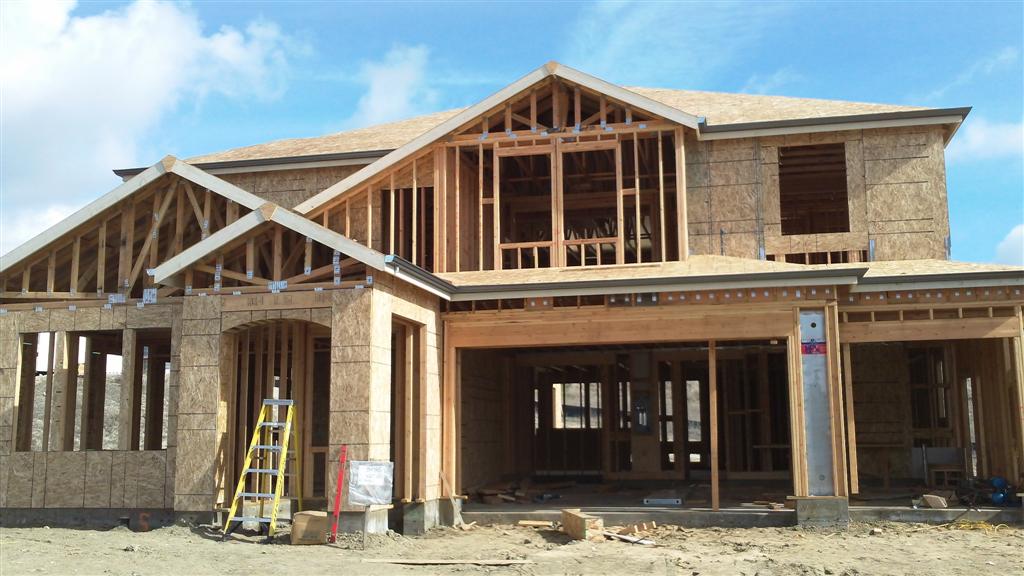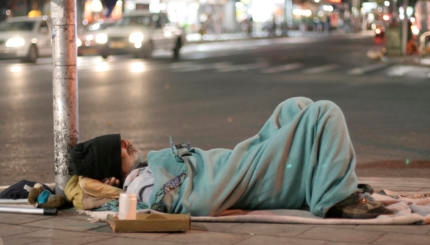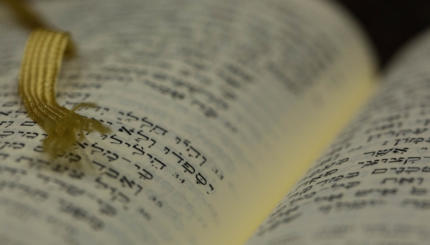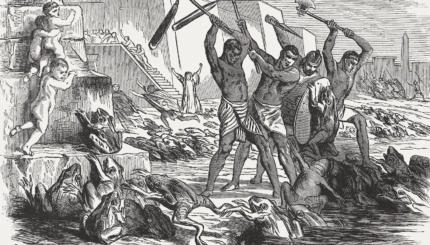Ask most Jews about their strongest Jewish memories, and they will speak of Passover Seders at their grandparents’ house, lighting Chanukah candles with their parents, or eating Shabbat and holiday meals with their families. Though the importance of synagogues and other Jewish institutions cannot be minimized, the home remains the place where most people first encounter Jewish ritual, and where much of Jewish life takes place.
It is perhaps a function of the Diaspora experience that the home has assumed a central role in Jewish religious life. Lacking, for most of Jewish history, a national homeland, Jews have instead focused on creating holy space within their own personal dwellings.
A Jewish home can be identified both by the objects in the home and by what takes place there. While individual families differ in their religious practice and Jewish interests, certain elements link Jewish homes to one another — and to other Jewish homes throughout history. One prominent symbol is the mezuzah, a box-encased scroll that serves as a literal acting out of the biblical command to “write these words on the doorposts of your house and on your gates” (Deuteronomy 11:20). Other examples include: ritual items — such as candlesticks, kiddush cups (with which to say the blessing on wine sanctifying Shabbat and holidays), and special plates for the challah loaves — and books on Jewish subjects or by Jewish authors. These objects help outsiders identify the house as Jewish and remind the inhabitants of the house of the centrality of Judaism in their home life.
The Jewish Kitchen
Without question, the most important room in a Jewish home is the kitchen. The kitchen is the place where preparation for holiday and Shabbat meals takes place, and it is where the family gathers before, after, and in between these meals. The centrality of the kitchen for Jewish family life is reflected in a passage in Miriam’s Kitchen, in which memoirist Elizabeth Ehrlich reminisces about her grandmother’s kitchen:

Help us keep Jewish knowledge accessible to millions of people around the world.
Your donation to My Jewish Learning fuels endless journeys of Jewish discovery. With your help, My Jewish Learning can continue to provide nonstop opportunities for learning, connection and growth.
“My grandmother used to sit before her stove on a tall, four-legged stool, stirring sweet-and-sour cabbage soup in a white enamel pot, dishing out salty perceptions of life. She was a capable woman. She carried herself with dignity about the neighborhood, as befitted the pharmacist’s wife. Widowed in the Fifties, she went back to work in the millinery trade she had learned as a 19-year-old immigrant in New York–proud to pay a cleaning woman, carry a union card, and earn health insurance on her own….
“But my grandmother’s blue-and-white tiled Brooklyn kitchen, in which so much life had been lived, was her truest sphere. There she chopped, grated, salted, peppered. There she handed on traditions brought from the Old World and translated amidst the exigencies of the New. Much of my valuable learning took place in that kitchen and in other rooms like it….
“[These memories] came back to me when I became a mother. I wondered what to teach my children. I wanted to build a floor under my children, something strong and solid.
“Then I remembered and unwrapped a bundle of family tales, many located in or near the kitchen. In these I found wisdom and innovation and the fading rituals and habits of an assimilating clan. I had been carrying that bundle all my life.” (xi-xii)
The kitchen — or wherever meals are served — not only becomes the center of family life, but also assumes a ritual function. According to the Talmud, “When the Temple stood, the altar offered atonement. Now, one’s table offers atonement” (Tractate Chagigah 27a). In other words, during the period when the Temple stood in Jerusalem, the primary means of divine worship involved offering sacrifices on the altar. Today, the primary means of divine worship involves having meals at home. Blessings before and after the meal, ritual foods, and family participation transform eating from a mundane activity into a religious experience.
Because the kitchen has traditionally been the women’s domain, much of Jewish women’s spirituality has historically revolved around what goes on in this space. While certain areas of religious life — notably the synagogue and the beit midrash (house of study) — were once the sole domain of men, kitchen ritual remained in the hands of women. Women controlled the kashrut (observance of the dietary laws) of the home and determined the family traditions associated with the kitchen. Tehines, Yiddish prayers composed by or for women in the 16th through 19th centuries, include many prayers specific to the home, including meditations on baking challah and on lighting Shabbat candles. In speaking to God, women invoked the private spaces of the home.
Lifecycle Rituals
In addition to holiday and Shabbat meals, certain lifecycle rituals take place in the home. The brit milah (circumcision) and simchat bat or brit bat (welcoming ceremony for baby girls), which welcome a new child into the Jewish community, traditionally take place in the home, though space constraints often force these events into the synagogue. Placing these rituals in the home emphasizes that the child’s first and primary Jewish community will be his or her family, and that the home will continue to be the center of his or her Jewish life.
While weddings do not ordinarily take place in the home, the huppah (canopy), a primary feature of the Jewish wedding ceremony, symbolizes the home that the couple will build together. In getting married under a huppah, the couple emphasizes their commitment to building a Jewish home together.
Historical Development
The explicit identification of the home as the center of Jewish life seems to be a relatively recent phenomenon. Early rabbinic sources speak often of public spaces, such as the beit midrash and the synagogue, but only rarely mention the religious life of the home. While there is much discussion of legal issues relevant to the home, such as kashrut, marital relations, and blessings over food, there is little talk of the home as a concept in and of itself. The Talmud contains numerous stories of rabbis who spend years studying away from home, sometimes to the point that they no longer recognize their own children. To the talmudic emphasis on the beit midrash as the center of Jewish life, later legal sources add a focus on other communal institutions, such as guilds and local governing bodies.
To a large extent, the lack of discussion about the home may be attributed to the fact that the home — in contrast to the beit midrash and the synagogue — was a primarily female space. As women’s voices are virtually absent from early Jewish writings, we can only guess at the actual place of the home in everyday Jewish life.
Some have argued that the designation of the home as the center of Judaism was a deliberate creation of the modern era. According to the historian Paula Hyman:
“From the period of the Enlightenment to the last third of the 19th century, when a vigorous public debate about Jewish Emancipation (and hence about the value of Judaism) raged in Western and Central Europe, even critics of Jewish culture and religion acknowledged the admirable qualities of the Jewish home. Because domestic orderliness and serenity within the patriarchal family were central values of the emerging bourgeois culture of the 19th century, Jews seeking to acculturate to the standards of the urban middle classes of their societies could, and did, point to their family life as compelling evidence for the worth of Jewish culture and as a sign of their own adherence to bourgeois norms.” (Quoted in David Kraemer, ed., The Jewish Family, 179)
The Jewish home is an ever-changing institution. The books on the shelves do not necessarily remain the same from one generation to the next, and the style of certain ceremonies and rituals reflects new interests and concerns. Women now play greater roles in synagogues and other traditionally male spaces, and men play greater roles in the home. Even as its precise nature changes, however, the home remains central to the practice of Judaism and to Jewish family life.
challah
Pronounced: KHAH-luh, Origin: Hebrew, ceremonial bread eaten on Shabbat and Jewish holidays.

Help us keep Jewish knowledge accessible to millions of people around the world.
Your donation to My Jewish Learning fuels endless journeys of Jewish discovery. With your help, My Jewish Learning can continue to provide nonstop opportunities for learning, connection and growth.
Shabbat
Pronounced: shuh-BAHT or shah-BAHT, Origin: Hebrew, the Sabbath, from sundown Friday to sundown Saturday.

Help us keep Jewish knowledge accessible to millions of people around the world.
Your donation to My Jewish Learning fuels endless journeys of Jewish discovery. With your help, My Jewish Learning can continue to provide nonstop opportunities for learning, connection and growth.
Talmud
Pronounced: TALL-mud, Origin: Hebrew, the set of teachings and commentaries on the Torah that form the basis for Jewish law. Comprised of the Mishnah and the Gemara, it contains the opinions of thousands of rabbis from different periods in Jewish history.

Help us keep Jewish knowledge accessible to millions of people around the world.
Your donation to My Jewish Learning fuels endless journeys of Jewish discovery. With your help, My Jewish Learning can continue to provide nonstop opportunities for learning, connection and growth.



